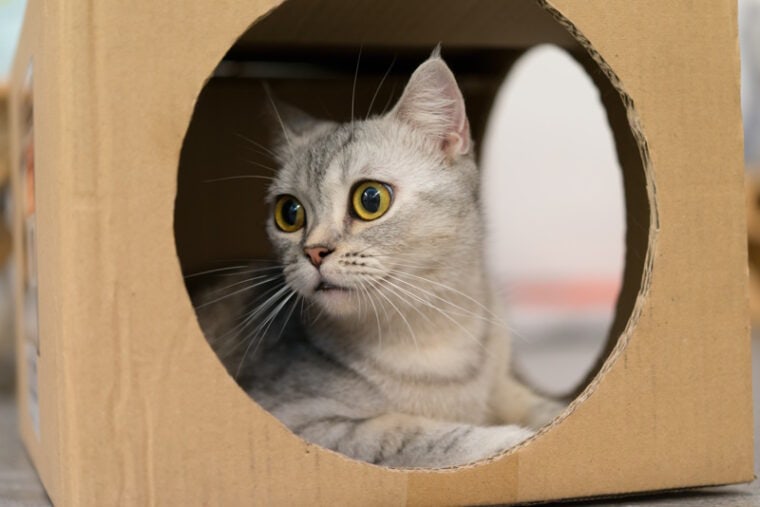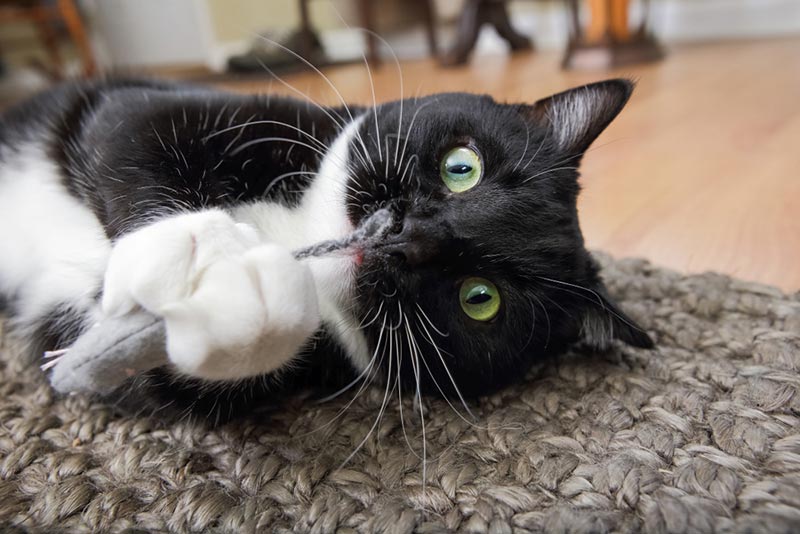How To Coax A Cat Out Of Hiding

A frightened feline seeking refuge under a bed or behind a sofa is a common scenario for cat owners. Understanding how to coax a cat out of hiding requires patience, understanding feline behavior, and employing effective strategies.
This article provides a guide, drawing on expert advice, on how to safely and calmly encourage a cat to emerge from its hiding place.
Understanding Feline Hiding Behavior
Cats often hide when they feel stressed, threatened, or unwell. New environments, loud noises, unfamiliar people, or even changes in their routine can trigger this behavior, according to the American Society for the Prevention of Cruelty to Animals (ASPCA).
Recognizing the underlying cause is the first step towards helping your cat feel safe and secure.
Creating a Safe and Calm Environment
The key to coaxing a cat out of hiding is to create an environment where it feels safe and secure. Minimize loud noises and sudden movements. Speak in a soft, reassuring voice.
Avoid direct eye contact, which can be perceived as threatening by cats.
Using Food and Treats as Lure
Food is often a powerful motivator. Place a small amount of your cat's favorite food or treats near the hiding place. The scent can entice them to come out.
"High-value treats," like tuna or cooked chicken, can be particularly effective, says Dr. Jane Brunt, a feline veterinarian. Be patient and allow the cat to approach the food at its own pace.
Employing Familiar Scents
Cats rely heavily on their sense of smell. Place a blanket or toy with a familiar scent near the hiding place. This can help create a sense of security and comfort.
You can also use a Feliway diffuser, a synthetic pheromone that mimics the natural pheromones produced by cats to create a calming effect, based on studies.
Using Toys and Play
Once the cat shows signs of becoming more comfortable, try using a favorite toy to encourage it to come out. A feather wand or laser pointer can be effective tools.
Engage in gentle play, avoiding any sudden movements or loud noises that could frighten the cat back into hiding.
Patience is Key
Perhaps the most important element in coaxing a cat out of hiding is patience. It may take time for the cat to feel safe enough to emerge.
Do not try to force the cat out, as this will likely increase its fear and anxiety. Continue to create a calm and reassuring environment, and allow the cat to come out on its own terms.
When to Seek Professional Help
If a cat remains in hiding for an extended period (more than 24 hours) or shows signs of illness, it is important to consult a veterinarian or a certified feline behaviorist. Prolonged hiding can be a sign of an underlying medical condition or a more serious behavioral issue.
Veterinarians can rule out any medical causes and behaviorists can offer tailored strategies for addressing anxiety and fear.
The Significance of Addressing Hiding Behavior
Addressing hiding behavior is essential for the well-being of cats. Prolonged stress and anxiety can have negative impacts on their health.
Creating a safe and secure environment can help cats feel more confident and comfortable, leading to a happier and healthier life. Furthermore, according to a study in the Journal of Feline Medicine and Surgery, early intervention can prevent the behavior from becoming chronic.
Conclusion
Coaxing a cat out of hiding requires understanding feline behavior, creating a safe and calm environment, and employing effective strategies such as using food, familiar scents, and play. Patience is paramount, and seeking professional help is crucial if the hiding behavior persists or is accompanied by signs of illness.
By following these guidelines, cat owners can help their feline companions feel more secure and improve their overall well-being.

/a0145-000022-56a111c63df78cafdaa9170e.jpg)





![How To Coax A Cat Out Of Hiding How To Get A Cat To Come Out Of Hiding? [Answered]](https://thecatsite.com/c/wp-content/uploads/2017/07/hiding-cat.jpg)










